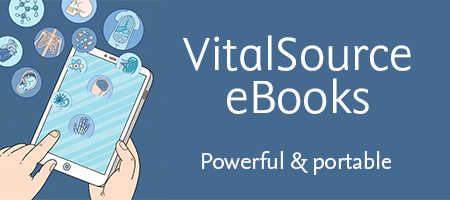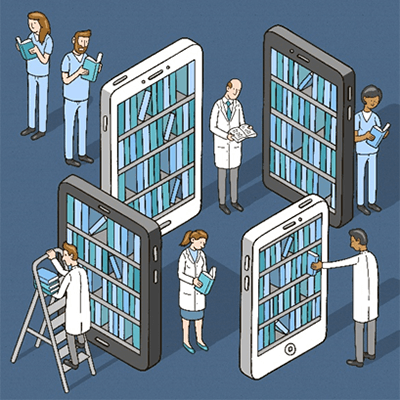Build the clinical judgment skills you need to provide quality care for maternity and pediatric patients! Clear and easy to read, Leifer’s Introduction to Maternity and Pediatric Nursing, Tenth Edition describes how you can provide effective, evidence-based care for women during pregnancy, labor, and delivery, and for newborns and growing children. The text spans the continuum of child development, making it easy to locate information by organizing topics from simple to complex and from health to illness. Another hallmark of the book is its strong focus on family-centered care, health promotion, and illness prevention. From nursing educators Kim Cooper and Kelly Gosnell, this bestselling text helps you prepare for the Next Generation NCLEX-PN® Exam and for the expanding role of the nurse in today’s healthcare practice.
Key Features
- NEW! Updated medication tables provide quick access to information about commonly used drugs
- NEW! Updated content reflects the latest research and technology, the latest standardized guidelines, and best practices in LPN/LVN care
- NEW and updated photos and illustrations reinforce the book’s concepts, with more representation of diversity
- Unfolding case studies follow one family through the conception and birth process, and include open-ended critical thinking questions applying the content to practice
- Case studies and questions for the Next Generation NCLEX Exam® (NGN) help you apply theory to practice and prepare for the NCLEX-PN examination
- Get Ready for the NCLEX® Examination! at the end of each chapter includes a summary of key points, online resources, review questions, and critical thinking questions
- More than 25 nursing care plans include nursing diagnoses and goals, nursing interventions, and rationales, along with clinical judgment questions to promote critical thinking skills
- Nursing guidelines reflect the World Health Organization’s Baby-Friendly Hospital Initiative, alternative therapies, immunization mandates, emergency preparedness, preventing medication errors, and more
- Detailed nursing skills cover a wide range of maternal and pediatric nursing interventions
- Patient Teaching boxes help you communicate instructions for self-care with patients and families
- Nursing tips include practical, evidence-based information applicable in the clinical setting
- Cultural Considerations boxes help you address the needs of culturally diverse patients and families
- Safety alerts highlight medication errors, the importance of protecting patients and others from accidents, and the spread of disease
Author Information
By Kim Cooper, MSN, RN, Dean and Associate Professor, School of Nursing, Ivy Tech Community College, Terre Haute, Indiana and Kelly Gosnell, MSN, RN, Department Chair and Associate Professor, School of Nursing, Ivy Tech Community College, Terre Haute, Indiana
UNIT I AN OVERVIEW OF MATERNITY AND
PEDIATRIC NURSING
1 The Past, Present, and Future
The Past
Obstetrics
Pediatrics
Obstetric and Pediatric Care in the United States
The Present
Family Centered Care
Financial Considerations
Changing Perceptions of Childbearing
Midwives
Role of the Consumer
Cultural Considerations
Medical Technology and Specialty Expertise
Genomics
Health Care Delivery Systems
Coordination of Care
Interprofessional Nursing Care
Healthy People 2030
The Future
Health Care Reform
Global Health Nursing
Future Roles for Nurses
Influence of Prenatal Care on the Adult Health of
the Newborn
2 The Nurse’s Role in Women’s Health Care
Goals of Healthy People 2030
Preventive Health Care for Females
Breast Care
Vulvar Self-Examination
Pelvic Examination
Menstrual Disorders
Amenorrhea
Abnormal Uterine Bleeding
Menstrual Cycle Pain
Endometriosis
Premenstrual Disorders
The Normal Vagina
Gynecological Infections
Toxic Shock Syndrome
Sexually Transmitted Infections
Pelvic Inflammatory Disease
Family Planning
Natural Family Planning: Fertility Awareness
Reversible Contraception
Emergency Contraception
Unreliable Contraceptive Methods
Permanent Contraception
Menopause
Physical Changes
Psychological and Cultural Variations
Treatment Options
Nursing Care of the Menopausal Female
UNIT II MATERNAL-NEWBORN NURSING
AND WOMEN’S HEALTH
3 Human Reproductive Anatomy and Physiology
Puberty
Male
Female
Reproductive Systems
Male
Female
The Human Sexual Response
Physiology of the Male Sex Act
Physiology of the Female Sex Act
4 Fetal Development
Cell Division and Gametogenesis
Fertilization
Sex Determination
Inheritance
Tubal Transport of the Zygote
Implantation of the Zygote
Development
Cell Differentiation
Prenatal Developmental Milestones
Accessory Structures of Pregnancy
Placenta
Umbilical Cord
Fetal Circulation
Circulation Before Birth
Circulation After Birth
Fetal Programming of Adult Health
Multifetal Pregnancy
5 Prenatal Care and Adaptations to Pregnancy
Goals of Prenatal Care
Preconception Care and Interconceptual Care
Prenatal Visits
Virtual Prenatal Care: Telehealth
Definition of Terms
Determining the Estimated Date of Delivery
Diagnosis of Pregnancy
Presumptive Signs of Pregnancy
Probable Signs of Pregnancy
Positive Signs of Pregnancy
Physiological Changes in Pregnancy
Role of Microbiomes in Pregnancy
Endocrine System
Reproductive System
Respiratory System
Cardiovascular System
Gastrointestinal System
Urinary System
Integumentary and Skeletal Systems
Nutrition for Pregnancy and Lactation
Recommended Dietary Allowances and
Recommended Dietary Intakes
Weight Gain
Nutritional Requirements During Pregnancy
Nutritional Requirements During Lactation
Exercise During Pregnancy
Elevated Temperature
Hypotension
Cardiac Output
Hormones
Other Factors
Smoking During Pregnancy
Travel During Pregnancy
Common Discomforts in Pregnancy
Psychosocial Adaptation to Pregnancy
Impact on the Mother
Impact on the Partner
Impact on the Pregnant Adolescent
Impact on the Older Couple
Impact on the Single Mother
Impact on the Single Father
Impact on Grandparents
Impact on Siblings
Prenatal Education
Effect of Pregnancy and Lactation on Medication
Metabolism
Immunizations During Pregnancy
Nursing Care During Pregnancy
6 Nursing Care of Women With Complications
During Pregnancy
Assessment of Fetal Health
Pregnancy-Related Complications
Hyperemesis Gravidarum
Bleeding Disorders of Early Pregnancy
Bleeding Disorders of Late Pregnancy
Hypertension During Pregnancy
Blood Incompatibility Between the Pregnant
Female and the Fetus
Pregnancy Complicated by Medical Conditions
Diabetes Mellitus
Heart Disease
Anemia
Infections
Environmental Hazards During Pregnancy
Bioterrorism and the Pregnant Patient
Substance Abuse
Trauma During Pregnancy
Effects of a High-Risk Pregnancy on the Family
Disruption of Usual Roles
Financial Difficulties
Delayed Attachment to the Infant
Loss of Expected Birth Experience
7 Nursing Care of Mother and Infant During Labor
and Birth
Cultural Influence on Birth Practices
Settings for Childbirth
Hospitals
Freestanding Birth Centers
Home
Components of the Birth Process
Powers
Passage
Passengers
Psyche
Normal Childbirth
Signs of Impending Labor
Mechanisms of Labor
Admission to the Hospital or Birth Center
When to Go to the Hospital or Birth Center
Water Birth
Admission Data Collection
Admission Procedures
Permission and Consent Forms
Laboratory Tests
Intravenous Infusion
Perineal Preparation
Determining Fetal Position and Presentation
Nursing Care of the Female in False Labor
Nursing Care Before Birth
Monitoring the Fetus
Monitoring the Female
Helping the Female Cope With Labor
Stages and Phases of Labor
Vaginal Birth After Cesarean
Nursing Care During Birth
Nursing Responsibilities
Immediate Postpartum Period: The Third and
Fourth Stages of Labor
Nursing Care Immediately After Birth
Care of the Mother
Care of the Newborn Immediately After Delivery
Cord Blood Banking
Microbiomes and Nursing Care During Labor
and Delivery
8 Nursing Management of Pain During Labor
and Birth
Education for Childbearing
Types of Classes Available
Variations of Basic Childbirth Preparation
Classes
Basic Content of All Childbirth Preparation
Classes
Childbirth and Pain
How Childbirth Pain Differs From Other
Pain
Factors That Influence Labor Pain
Nonpharmacological Childbirth Preparation and
Pain Management
Pharmacological Pain Management
9 Nursing Care of Women With Complications
During Labor and Birth
Obstetric Procedures
Induction or Augmentation of Labor
Amniotomy
Amnioinfusion
Version
Episiotomy and Lacerations
Forceps and Vacuum Extraction Births
Cesarean Birth
Abnormal Labor
Problems With the Powers of Labor
Problems With the Fetus
Problems With the Pelvis and Soft Tissues
Problems With the Psyche
Abnormal Duration of Labor
Premature Rupture of Membranes
Nursing Care
Preterm Labor
Signs of Impending Preterm Labor
Tocolytic Therapy
Prolonged Pregnancy
Risks
Emergencies During Childbirth
Prolapsed Umbilical Cord
Abnormal Placental Attachment
Uterine Rupture
Amniotic Fluid Embolism
10 The Family After Birth
Adapting Nursing Care for Specific Groups and
Cultures
Cultural Influences on Postpartum Care
Using Translators
Dietary Practices
Postpartum Changes in the Mother
Reproductive System
Cardiovascular System
Urinary System
Gastrointestinal System
Integumentary System
Musculoskeletal System
Immune System
Adaptation of Nursing Care Following Cesarean
Birth
Emotional Care
Mothers
Parenthood
Fathers
Siblings
Grandparents
Grieving Parents
The Family Care Plan
Phase 2: Care of the Newborn
Breastfeeding
Formula Feeding
Discharge Planning
11 Nursing Care of Women With Complications
After Birth
Shock
Hemorrhage
Hypovolemic Shock
Early (Primary) Postpartum Hemorrhage
Late Postpartum Hemorrhage
Subinvolution of the Uterus
Thromboembolic Disorders
Infections
Puerperal Sepsis
Mastitis and Breastfeeding
Mood Disorders
Postpartum Psychosis
The Homeless Mother and Newborn
12 The Term Newborn
Adjustment to Extrauterine Life
Maternal and Newborn Microbiomes
Phase 3: Care of the Newborn
Nervous System: Reflexes
Respiratory System
Circulatory System
Musculoskeletal System
Genitourinary System
Integumentary System
Gastrointestinal System
Preventing Infection
Discharge Planning and Parent Teaching
13 Preterm and Postterm Newborns
The Periviable Newborn
The Preterm Newborn
Causes of Preterm Birth
Physical Characteristics
Related Problems
Special Needs
Use of Complementary Medicine in the Neonatal
Intensive Care Unit
Prognosis
Family Reaction
The Postterm Newborn
Physical Characteristics
Transporting the High-Risk Newborn
Discharge of the High-Risk (Preterm Birth)
Newborn
14 The Newborn With a Perinatal Injury or Congenital
Malformation
Malformations Present at Birth
Nervous System
Gastrointestinal System
Musculoskeletal System
Metabolic Defects
Phenylketonuria
Maple Syrup Urine Disease
Galactosemia
Chromosomal Abnormalities
Down Syndrome
Perinatal Injuries
Hemolytic Disease of the Newborn:
Erythroblastosis Fetalis
Intracranial Hemorrhage
Transient Tachypnea of the Newborn
Meconium Aspiration Syndrome
Neonatal Abstinence Syndrome
Infant of a Diabetic Mother
UNIT III THE GROWING CHILD AND
FAMILY
15 An Overview of Growth, Development, and
Nutrition
Growth and Development
The Impact of Growth and Development on
Nursing Care
Terminology
Directional Patterns
Some Developmental Differences Between
Children and Adults
Critical Periods
Integration of Skills
Growth Standards
Developmental Screening
Influencing Factors
Personality Development
The Growth and Development of a Parent
Nutrition
Nutritional Heritage
Family Nutrition
Gluten-Free Diet
Food Security
Nutritional Care Plan
Nutrition and Health
Nutrition and Health Promotion
Feeding the Healthy Child
Obesity
Feeding the Ill Child
The Teeth
Play
Traveling With Children
Ongoing Health Supervision
16 The Infant
General Characteristics
Oral Stage
Motor Development
Emotional Development
Need for Constant Care and Guidance
Development and Care
Community-Based Care: A Multidisciplinary
Team
Health Promotion
Infants With Special Needs
Illness Prevention
Immunizations
Nutrition Counseling
Infant Safety
Car Safety
Fall Prevention
Toy Safety
Summary of Major Developmental Changes in
the First Year
17 The Toddler
General Characteristics
Physical Development
Sensorimotor and Cognitive Development
Speech Development
Guidance and Discipline
Toilet Independence
Daily Care
Nutrition Counseling
The Picky Eater Versus a Feeding
Disorder
Day Care
Injury Prevention
Consumer Education
Toys and Play
18 The Preschool Child
General Characteristics
Physical Development
Cognitive Development
Cultural Influences
Language Development
Development of Play
Spiritual Development
Sexual Curiosity
Bedtime Habits
Physical, Mental, Emotional, and Social
Development
The 3-Year-Old
The 4-Year-Old
The 5-Year-Old
Guidance
Discipline and Limit Setting
Jealousy
Thumb Sucking
Enuresis
Preschool
Daily Care
Clothing
Accident Prevention
Play During Health and Illness
Value of Play
The Nurse’s Role
Types of Play
Nursing Implications of Preschool Growth and
Development
19 The School-Age Child
General Characteristics
Physical Growth
Sexual Development
Gender Identity
Sex Education
Influences From the Wider World
School-Related Tasks
Preventing Abduction
Play
Observing Play
Latchkey Children
Physical, Mental, Emotional, and Social
The 6-Year-Old
The 7-Year-Old
The 8-Year-Old
The 9-Year-Old
Preadolescence
Chores as Teaching Tools
Guidance and Health Supervision
Health Examinations
20 The Adolescent
General Characteristics
Growth and Development
Physical Development
Psychosocial Development
Cognitive Development
Sexual Development
Parenting the Adolescent
Health Promotion and Guidance
Nutrition
Personal Care
Common Problems of Adolescence
Smoking and Vaping
Drug Use
Social Media
Depression
Adolescent Pregnancy
The Nursing Approach to Adolescents
UNIT IV ADAPTING CARE TO THE
PEDIATRIC PATIENT
21 The Child’s Experience of Hospitalization
Health Care Delivery Settings
Outpatient Clinic
Home
Children’s Hospital Unit
The Child’s Reaction to Hospitalization
Separation Anxiety
Pain
Response to Drugs
Fear
Regression
Cultural Responses and the Use of Language
Interpreters
Intercultural Communication: Responses to
Hospitalization
The Parents’ Reactions to the Child’s
Hospitalization
The Nurse’s Role in the Child’s
Hospitalization
Admission
Developing a Pediatric Nursing Care Plan
Clinical Pathways
Meeting the Needs of the Hospitalized
Child
Confidentiality and Legality
Discharge Planning
Home Care
22 Health Care Adaptations for the Child and
Family
Admission to the Pediatric Unit
Informed Consent
Identification
Essential Safety Measures in the Hospital
Setting
Preparation Steps for Performing Procedures
Transporting, Positioning, and Restraining
Data Collection, Observation, and Recording
Organizing the Infant Data Collection
Basic Data Collection
The History Survey
The Physical Survey
Specimen Collection
Physiological Responses to Medications in Infants
and Children
Absorption of Medications in Infants and
Children
Metabolism of Medications in Infants
and Children
Excretion of Medications in Infants and
Children
Nursing Responsibilities in Administering
Medications to Infants and Children
Parent Teaching
Administering Oral Medications
Administering Topical Medications
Preventing Medication Errors
Selected Procedures and Their Adaptation to
Children
Nutrition, Digestion, and Elimination
Respiration
Preoperative and Postoperative Care
23 Complementary and Alternative Therapies in
Maternity and Pediatric Nursing
Complementary and Alternative Therapies
Pediatric Use
The Nurse’s Role
Federal Regulations and Dietary
Supplements
Common Alternative Health Care Practices
Dietary Therapy
UNIT V THE CHILD NEEDING NURSING
CARE
24 The Child With a Sensory or
Neurological Condition
The Ears
Disorders and Dysfunction of the Ear
The Eyes
Visual Acuity Tests
Disorders and Dysfunction of the Eye
The Nervous System
States of Consciousness
Disorders and Dysfunction of the Nervous
System
25 The Child With a Musculoskeletal Condition
Musculoskeletal System
Musculoskeletal System: Differences Between the
Child and the Adult
Observation and Assessment of the
Musculoskeletal System in the Growing
Child
Observation of Gait
Observation of Muscle Tone
Neurological Examination
Diagnostic Tests and Treatments
Laboratory Tests and Treatments
Pediatric Trauma
Soft Tissue Injuries
Prevention of Pediatric Trauma
Traumatic Fractures
Disorders and Dysfunction of the
Musculoskeletal System
Osteomyelitis
Duchenne’s Muscular Dystrophy
Slipped Femoral Capital Epiphysis
Legg-Calvé-Perthes Disease
Osteosarcoma
Ewing’s Sarcoma
Juvenile Idiopathic Arthritis (Juvenile Rheumatoid
Arthritis)
Torticollis (Wry Neck)
Scoliosis
Sports Injuries
Family Violence
Child Abuse
Federal Laws and Agencies
Nursing Care and Interventions
Cultural and Medical Issues
26 The Child With a Respiratory Disorder
The Respiratory System
Development of the Respiratory Tract
Normal Respiration
Disorders and Dysfunction of the Respiratory
System
27 The Child With a Cardiovascular Disorder
The Cardiovascular System
Signs Related to Suspected Cardiac Pathology
Congenital Heart Defects
Acquired Heart Diseases
28 The Child With a Condition of the Blood, Blood-Forming Organs, or Lymphatic System
Hematological System
Anemias
Iron-Deficiency Anemia
Sickle Cell Disease
Thalassemia
Bleeding Disorders
Hemophilia
Platelet Disorders
IgA Vasculitis (Henoch-Schönlein Purpura)
Disorders of White Blood Cells
Leukemia
Hodgkins Disease
Nursing Care of the Chronically Ill Child
Chronic Illness
Developmental Disabilities
Home Care
Nursing Care of the Dying Child
Facing Death
Self-Exploration
The Child’s Reaction to Death
The Child’s Awareness of Their Condition
Physical Changes of Impending Death
Stages of Dying
29 The Child With a Gastrointestinal Condition
The Gastrointestinal Tract
Disorders and Dysfunction of the Gastrointestinal
Tract
Diagnostic and Imaging Tests of the
Gastrointestinal Tract
Congenital Disorders
Disorders of Motility
Fluid and Electrolyte Imbalance
Nutritional Deficiencies
Infections
Poisoning
Foreign Body Ingestion
30 The Child With a Genitourinary Condition
Development of the Urinary Tract
Development of the Reproductive Systems
Assessment of Urinary Function
Anomalies of the Urinary Tract
Impact of Urinary or Genital Surgery on Growth
and Development
31 The Child With a Skin Condition
Skin Development and Functions
Skin Disorders and Variations
Congenital Lesions
Skin Manifestations of Illness
Infections
Injuries
Nursing Care of the Burned Child
Emotional Support
Frostbite
32 The Child With a Metabolic Condition
Integration of the Nervous and
Endocrine Systems
Disorders and Dysfunction of the Endocrine
System
Inborn Errors of Metabolism
Endocrine Disorders
Common Metabolic Dysfunctions
33 The Child With a Communicable
Disease and Immune Response
Introduction
Common Childhood Communicable Diseases
Review of Terms
Host Resistance
Types of Immunity
Transmission of Infection
Coronavirus-19
Medical Asepsis, Standard Precautions, and
Transmission-Based Precautions
Protective Environment Isolation (Neutropenic
Precautions)
Hand Hygiene
Family Education
The Extended Use of Face Protective Masks for
Children
Traveler’s Diarrhea
Rashes
Worldwide Immunization Programs
The Nurse’s Role
Vaccines
The Future of Immunotherapy
Bioterrorism, Disasters, and the Maternal-Child
Patient
The Nurse’s Role in the Hospital Setting
Sexually Transmitted Infections
Overview
Nursing Care and Responsibilities
HIV/AIDS in Children
34 The Child With an Emotional or
Behavioral Condition
The Effect of an Emotional or Behavioral Illness
on Growth and Development
Effect of the Emotional or Behavioral Illness on
Siblings
The Nurse’s Role
Types and Settings of Treatment
Childhood Mental Disorders
Organic Behavioral Disorders
Neurodevelopmental Dysfunctions
Autism Spectrum Disorders
Obsessive-Compulsive Disorders in Children
Attention-Deficit/Hyperactivity Disorder
Eating Disorders
Disruptive Mood Regulation Disorder
Oppositional Defiant Disorder
Conduct Disorder
Internet Gaming Disorder
Environmental or Biochemical
Behavioral Disorders
Separation Anxiety
Mood Disorders
Suicide
Substance Abuse
Minimizing the Impact of Behavioral Disorders in
Children
APPENDIXES
A Use of Personal Protective Equipment When
Caring for Patients With Confirmed or Suspected
COVID-19
B The Joint Commission’s List of Dangerous
Abbreviations, Acronyms, and Symbols
C Commonly Used Abbreviations in Maternity and
Pediatric Nursing
D Common Spanish Phrases Used in Maternity and
Pediatric Nursing
E Conversion of Pounds and Ounces to Grams for
Newborn Weights
F Normal Vital Signs and Temperature Equivalents
for Infants and Children
G Pediatric Laboratory Values Reference
References
Glossary
Index













